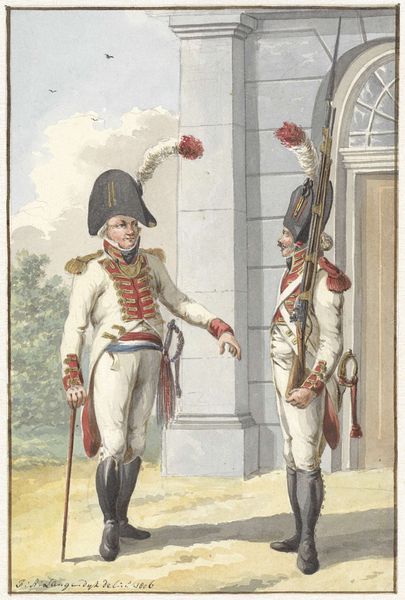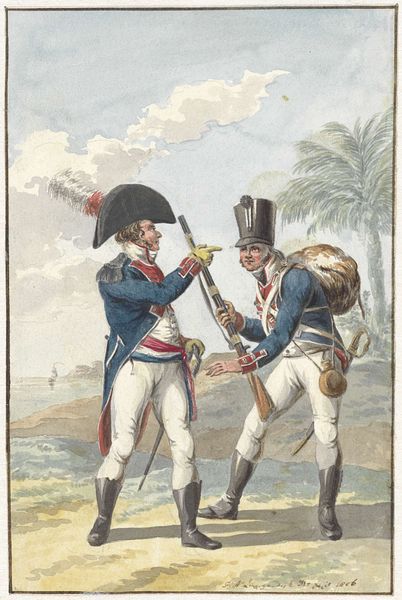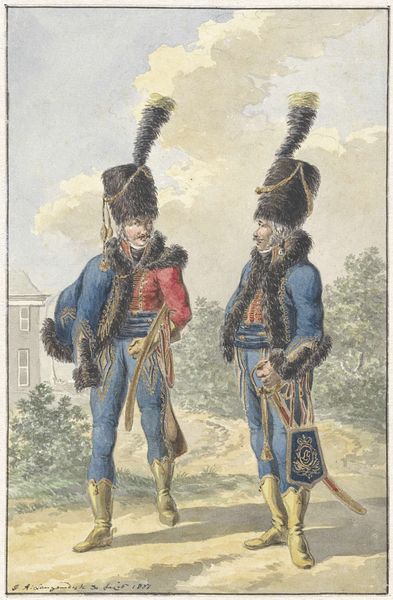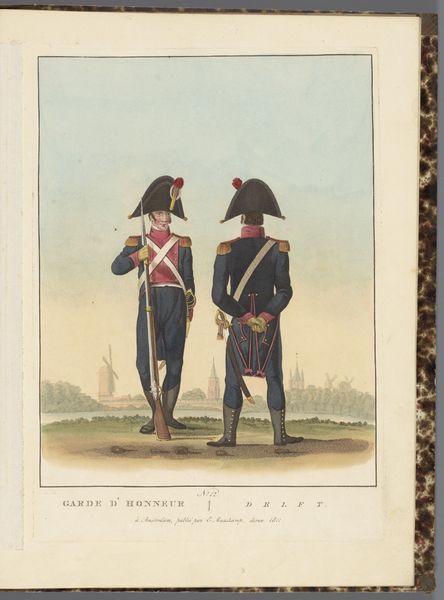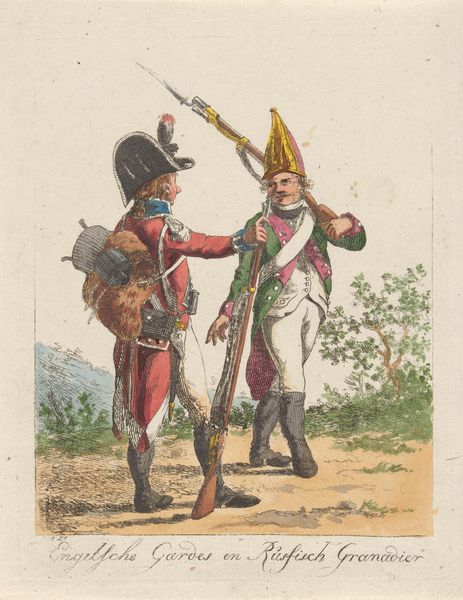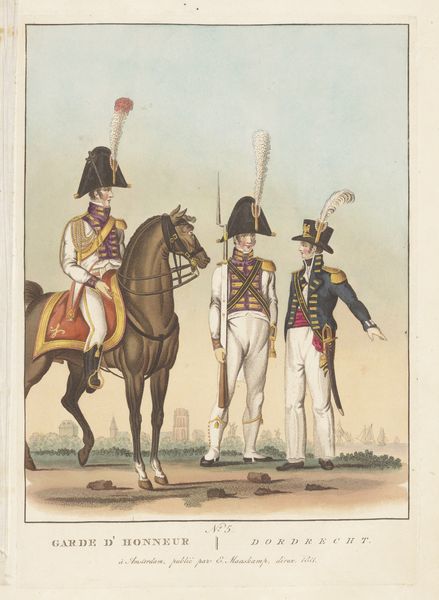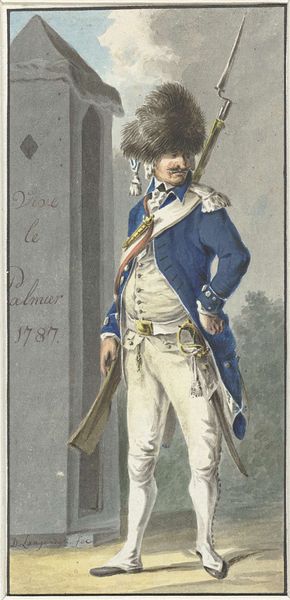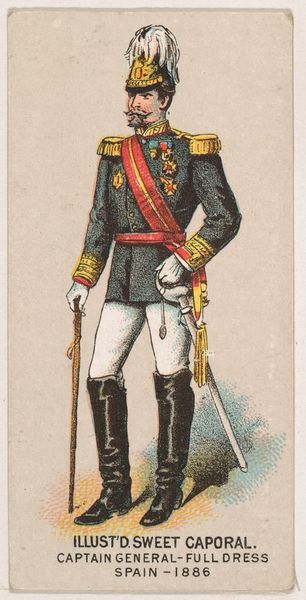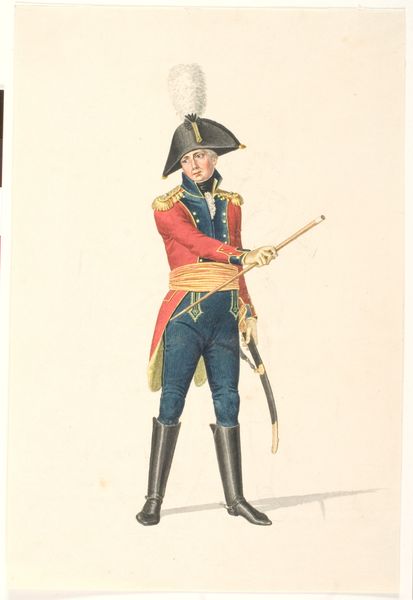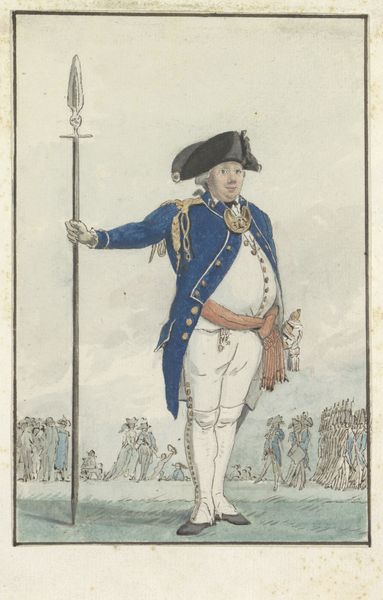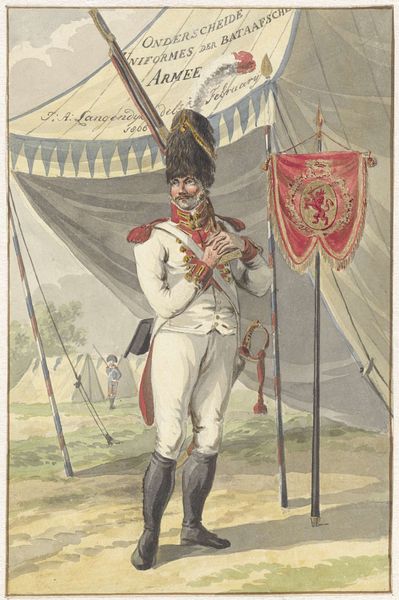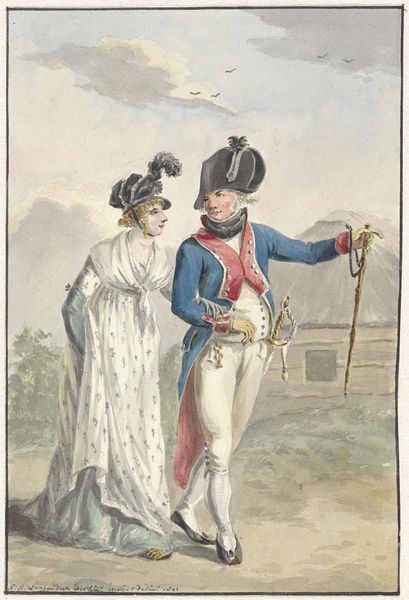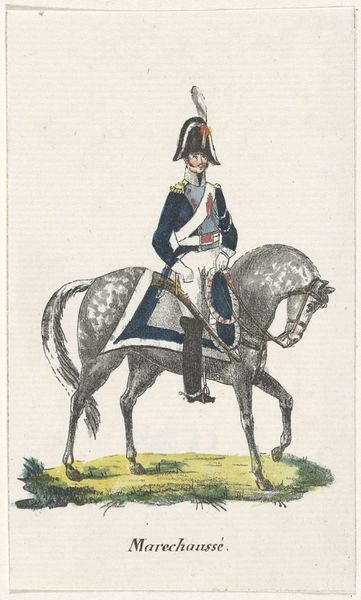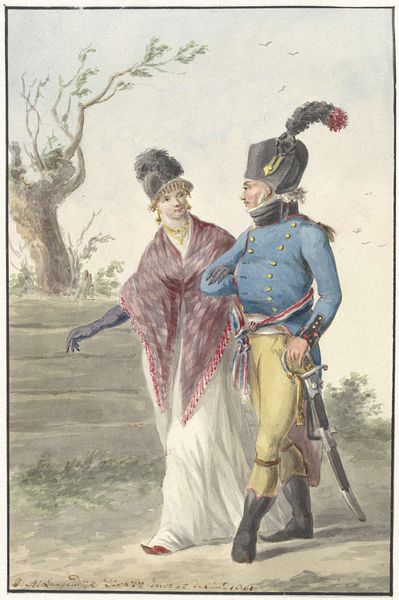
drawing, watercolor
#
portrait
#
drawing
#
neoclacissism
#
caricature
#
watercolor
#
coloured pencil
#
watercolour illustration
#
genre-painting
#
history-painting
#
academic-art
Dimensions: height 157 mm, width 102 mm
Copyright: Rijks Museum: Open Domain
Curator: Look at the precision and finery in this work by Jan Anthonie Langendijk Dzn, entitled "Twee staande officieren," dating back to 1801. Editor: It strikes me as both formal and faintly absurd. The stiffness, the ornamentation... there's a lot to unpack in the attire of power here. Curator: Indeed. The Neoclassical style emphasizes order, which here becomes manifest in the strict symmetry of their poses. See how their uniforms present a specific social order? Editor: An order maintained through rigid structures and... excess? The feathers, the gold braid—it feels performative, even for military dress. Is there commentary at play, or is it pure portraiture? Curator: Langendijk’s background suggests more than mere documentation. Consider how genre painting and history painting co-mingle here, possibly embedding a deeper commentary on the state of the officer class. The colours are muted. The message could be double edged: are we looking at confident leaders or caricatures of authority? Editor: Precisely! The watercolour and coloured pencil medium softens the visual impact slightly, creating space for doubt. How much authority is substance, and how much is show? This connects directly to broader socio-political critiques questioning who holds power and why. Curator: There's the intriguing symbolism too. Take the one officer adjusting the hat of the other. Is it a gesture of camaraderie or something else, some implicit critique? There's an almost theatrical quality to their interaction. It reminds us that symbols have psychological as well as social weight. Editor: Right. And that psychology shifts depending on who's doing the viewing. Today, observing those elaborate hats against our understanding of class and militarism makes their symbolism deeply fraught, connected to questions of equity, legacy, and privilege. Curator: Reflecting on it, the seemingly simple illustration becomes layered. An encounter in time, refracted through various historical lenses. Editor: Leaving us to contemplate how symbols of power persist, adapt, or ultimately crumble in the face of evolving values.
Comments
No comments
Be the first to comment and join the conversation on the ultimate creative platform.
